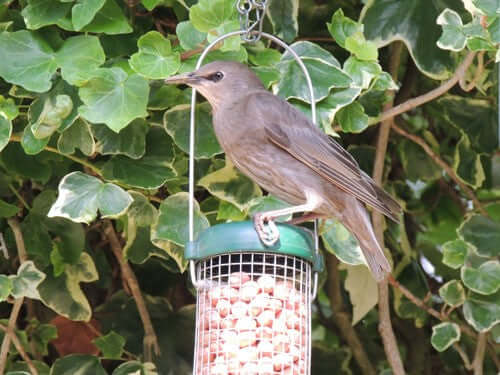
Where have my garden birds gone? And what's happened to their feathers?
Share
Not seeing any birds? Discover here the scrumptious foods we suggest to see new faces on your bird feeders.
You may have noticed lately that many of your garden birds are decidedly not looking their best, or some of them have disappeared altogether, or perhaps they are slipping in to feed only occasionally or briefly. Don’t worry; they’ll be back, and looking much sprucer. The fact is this is the moulting season.
Every now and then birds need to change their feathers. Old ones fall out and new ones grow. Naturally though, it doesn’t happen all at once. A totally ‘plucked’ Blue Tit would not only be too embarrassed to show itself, it would also be utterly vulnerable to bad weather and predators. Worst of all, of course, it would not be able to fly. In fact, the process and timing of moult varies amongst various families of birds. Wildfowl are the only ones that can become utterly earth (or water) bound. Which is why moulting ducks tend to gather on isolated islands or mudflats out of harms way until they grow new wings, as it were.
At this time of year - as far as bird diets are concerned - our focus should be on providing protein rich foods and valuable seed mixtures as they are the reviver following the strains of breeding and moulting - seed mixtures like Huskfree Advance with Dried Mealworms, High Energy Extra Mix, Native Finch and of course the super Sunflower Heart.

At this time of the year nearly all ‘garden birds’ are likely to be moulting. The adults need it most. You’ve probably noticed how tatty some of them have got after a hard season bringing up hungry youngsters. Those new fledglings themselves are also due for a change of feathers; even though it was only a few weeks ago that they were looking particularly smart [like the juvenile Starling above], when young Blue and Great Tits were instantly recognisable by their fresh, neat – albeit not quite so colourful - plumages.

The moulting process is extremely orderly and efficient. It has to be. The all important ‘flight feathers’ on wings drop out one by one, in sequence, as it were, and new ones grow rapidly, instantly ‘filling in gaps’ so that the bird is only very briefly put at risk by being unable to fly as efficiently as normal. Once the wings are back in full working order the ‘body moult’ takes place. Look closely and you may recognise adults with scruffy heads and bodies but with neat bright wings. The youngsters don’t need to change their new strong wing feathers yet, but they do have a body moult. To use the ornithological jargon, the birds change from ‘juvenile’ into ‘immature’ or ‘first winter’ plumage. Once the moult is completed both adults and their offspring will go through the winter in their new plumages, which are likely to get more and more worn as the months go by until they moult again in spring into their best breeding outfits (although the rules do vary from species to species and in some birds the usual dull winter feathers wear away to reveal brighter colours ‘underneath’ – in fact, the lower part of the feathers). All a bit boggling? Well, yes, but…….
Moult is a complex but very necessary business. Whilst it’s going on the birds - not surprisingly – tend to keep a low profile. They need patience, and so do you! Nevertheless, as I said, they’ll be back, looking and feeling better and fitter than ever. Which is good news for all of us!
(Come to think of it I could do with a bit of a moult myself!)

